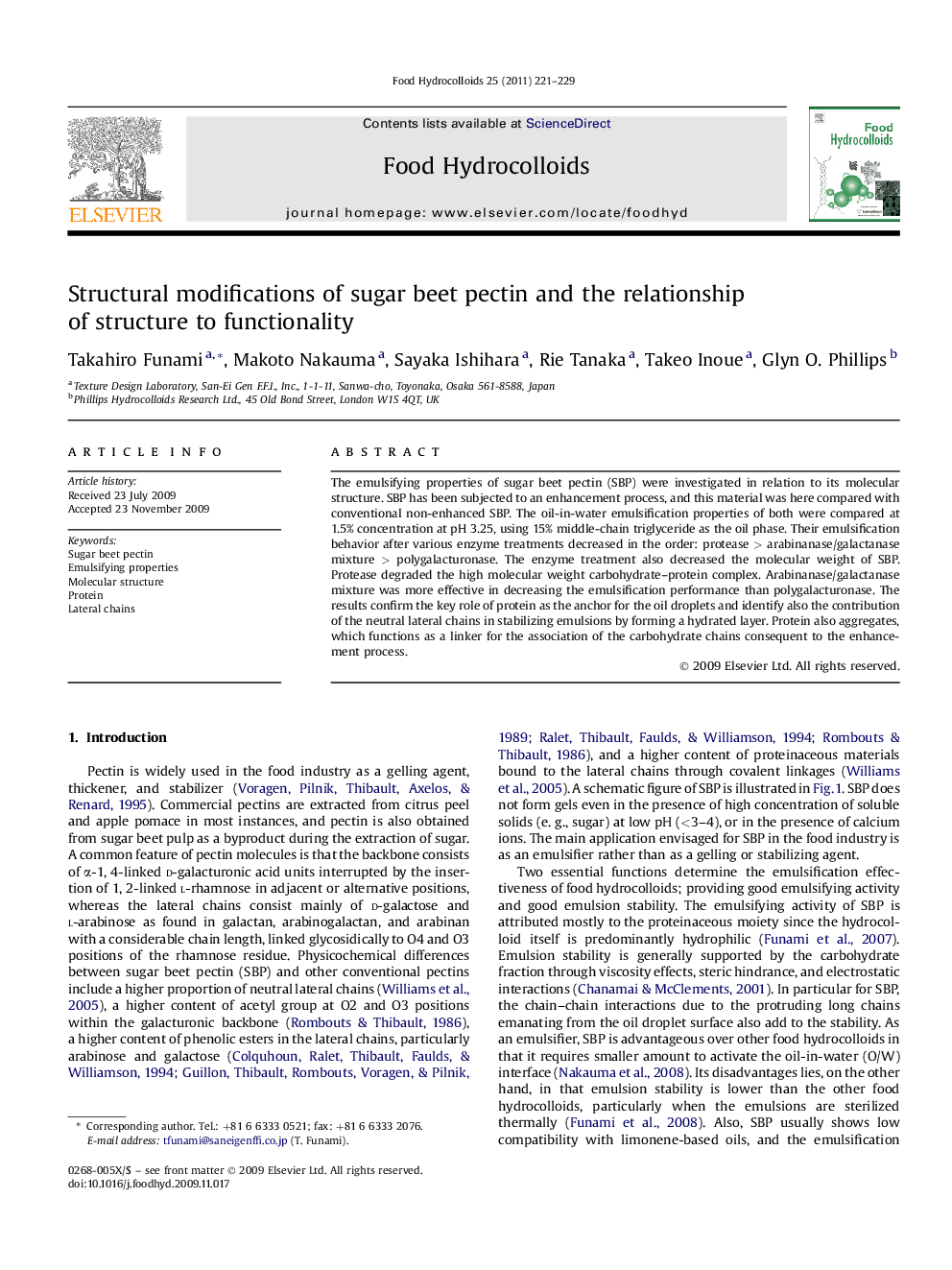| کد مقاله | کد نشریه | سال انتشار | مقاله انگلیسی | نسخه تمام متن |
|---|---|---|---|---|
| 605252 | 880339 | 2011 | 9 صفحه PDF | دانلود رایگان |

The emulsifying properties of sugar beet pectin (SBP) were investigated in relation to its molecular structure. SBP has been subjected to an enhancement process, and this material was here compared with conventional non-enhanced SBP. The oil-in-water emulsification properties of both were compared at 1.5% concentration at pH 3.25, using 15% middle-chain triglyceride as the oil phase. Their emulsification behavior after various enzyme treatments decreased in the order: protease > arabinanase/galactanase mixture > polygalacturonase. The enzyme treatment also decreased the molecular weight of SBP. Protease degraded the high molecular weight carbohydrate–protein complex. Arabinanase/galactanase mixture was more effective in decreasing the emulsification performance than polygalacturonase. The results confirm the key role of protein as the anchor for the oil droplets and identify also the contribution of the neutral lateral chains in stabilizing emulsions by forming a hydrated layer. Protein also aggregates, which functions as a linker for the association of the carbohydrate chains consequent to the enhancement process.
Correlation plot of experimental and calculated pEC50 elucidates that almost all samples are uniformly distributed in a straight line around 45° origin. 3D-HoVAIF can illustrate structural feature of compounds.Figure optionsDownload as PowerPoint slide
Journal: Food Hydrocolloids - Volume 25, Issue 2, March 2011, Pages 221–229